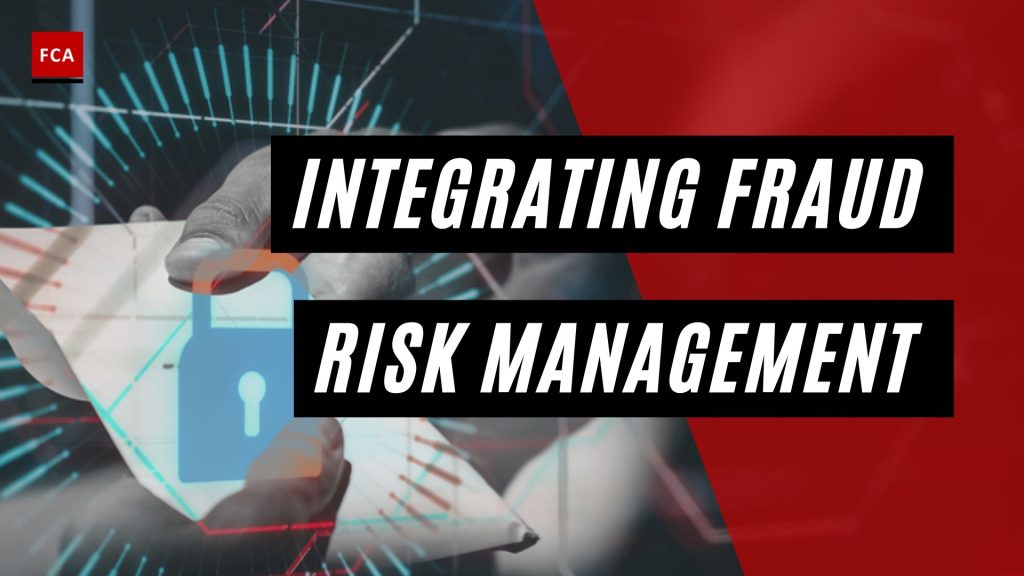Integrating fraud risk management with anti-financial crime measures enables organizations to proactively identify, assess, and prevent potential fraudulent activities, resulting in enhanced protection against financial crimes. To achieve the overall objective of fraud risk management, the management needs to integrate anti-financial crime measures with it.
Integration means all anti-financial crime policies procedures and systems should include the elements of fraud identification, assessment, and prevention. Financial crimes include fraud, therefore monitoring the risk landscape in isolation may cause non-identification of existing fraud or other financial crime risks.
The significance of the impacts of financial crimes, including frauds in an organization has created the need to focus on the areas where financial crimes, such as money laundering, may also link with other financial crimes such as a fraud incident.
For example, a customer involved in money laundering activity, may also be a fraudster, and commit fraudulent activities such as credit card fraud. Therefore, while assessing fraud risk, the risk management team must perform the integrated risk assessment as a whole, to identify the pattern and links between different reported financial crimes.

Integrating Fraud Risk Management with Anti-Financial Crime Measures
Integration of fraud risk management and anti-financial crime also leads to the effective implementation of a risk-based approach to manage overall financial crimes in the organization.
Organizations conduct internal fraud risk assessments with the purpose to develop relevant fraud risk management policies and procedures but with the integration of the financial crime risk assessment process, the policies and procedures may overlook essential controls required to be implemented to identify risk and crime patterns.
To identify, assess, manage, and mitigate financial crime and fraud risks, the policies and procedures must be developed in an integrated manner, with defined roles and responsibilities of process owners from different functions and departments.
Fraud risk management and anti-financial crime measures may generally be based on subjective judgment, perception, and actual experiences of the organization, or they may be backed with real data points and evidence. To implement an effective and integrated fraud risk management and anti-financial crime process, the available data points and evidence need to be used for effective risk assessment purposes. The integration of fraud risk management and the anti-financial crime process requires consolidation and documentation.
Various methods are used to effectively integrate both processes, such as:

Quantification of Risk through Risk Matrix
A financial crime risk matrix tool is developed and used, which is a tool, where financial crime and fraud risks are identified and documented. The risks are mapped with financial crime and fraud prevention or detection controls.
A risk matrix that quantifies the likelihood and impact of financial crimes and fraud risks may be developed by the organizations, thereby categorizing risks as low, medium, and high depending on the severity levels of particular financial crime risks. Without appropriate interlinking of fraud and financial crime risks, it would be difficult for organizations to identify financial crime risk patters and linking with fraudulent activities.
For example, a high-risk category customer may be an unknown fraudster, who may be involved in using bribery techniques, to influence the employees of the institution, for his or her financial advantage. He or she may ask for the personal data of institutions customers, to perform credit card frauds.
Preparation of Integrated Financial Crime and Fraud Risk Register
Risk registers are an effective tool for documenting and assessing the risks related to different activities and processes. Risk registers enable performing inherent and residual risk assessments which result in the identification of key and non-key risks, for a particular process or department.
A fraud risk register may be developed by organizations, whereby fraud risks emanating from various business aspects are documented and accounted for. The fraud risk register comprehensively covers all the fraud risks related to the activities and processes of the organization. Usually, financial crime and fraud risk registers are prepared and maintained by process owners, however, the fraud risk management team ensures that these risk registers are prepared effectively, with proper interlinking and integration.
Fraud risks are sequentially documented for each identified activity and process and related mitigating controls are mentioned against each fraud risk. Risk scores are calculated based on the defined risk assessment grid, to assess the impact of each documented fraud risk. Risk registers are periodically reviewed to check the effectiveness of documented controls and risk scorings.
Fraud risk registers are updated on an ongoing basis when the need arises or new fraud risk is identified or reported.

Final Thoughts
The integration of fraud risk management with anti-financial crime measures is essential for organizations to achieve their overall objectives. By combining these two aspects, organizations can effectively identify, assess, and prevent financial crimes such as fraud. This integrated approach allows for a holistic understanding of risk patterns and connections between different financial crimes, enabling the implementation of robust risk-based strategies.
It is crucial to develop integrated policies, procedures, and risk registers, utilizing both subjective judgment and real data points to support effective risk assessment. By consolidating efforts and documenting the integration process, organizations can strengthen their defenses against financial crimes and protect themselves from potential fraudulent activities.








